The grandeur of Rajasthan is a treat to eyes and its capital, Jaipur is a perfect mixture of both the old and new age. Unlike Udaipur, Jodhpur or Jaisalmer, you will observe that Jaipur is a bustling city with the 21st century comforts along with its rich cultural heritage. Though Jaipur is referred to as the pink city, there is an area called ‘Pink city’ within the main Jaipur city which is where all the monuments and buildings are pink in colour. Let’s dive into my ‘Jaipur – Guide to Explore Rajasthan’s Capital’ which is a continuation of my Rajasthan series.

Click here to check my other blog posts on Rajasthan.
How to commute to and within Jaipur?
Jaipur is 4 hours from Delhi and there are multiple trains to commute from Delhi. Jaipur has an airport as well in case you wish to fly. Since I started my Rajasthan exploration trip from Jodhpur, I commuted by train from Jaisalmer to Jaipur.
There are shared autorickshaws, taxis and city buses to commute within the city. When you are exploring places within the pink city area you can commute on foot owing to the proximity between places. You can also rent an auto rickshaw for Rs. 400 – 500 a day to tour the main tourist spots.
Stay in Jaipur
I preferred to stay at Zostel since it was located within the pink city. The are multiple hostels and budget stays in Jaipur and since the commute within the city is cheap it shouldn’t really matter even if you stay far. Jaipur also has many of India’s most luxury stays to feel the royalty within you 😉
Note: If you would really like to understand a structure of historical significance in Jaipur I would strongly suggest you to hire a guide. We hired guides for all the places we visited in Rajasthan and it was worth it. Approximate guide charges for a place would be Rs.300 for a group of 3-4.
Exploring the Pink City (New Capital)
Hawa Mahal
If someone said Jaipur, Hawa Mahal is what used to come to my mind when I was a child. Only when I visited Jaipur, I came to know so much about Hawa Mahal.
Hawa Mahal was built in 1799 AD by Sawai Prithvi Singh. It was exclusively for the ladies of Jaipur to celebrate festivals like Gangur and Teej. It was guarded by the eunuchs. The mahal has 953 windows. The outward structure of the mahal enabled ladies to view the procession on the road from inside the mahal but vice versa wasn’t possible.
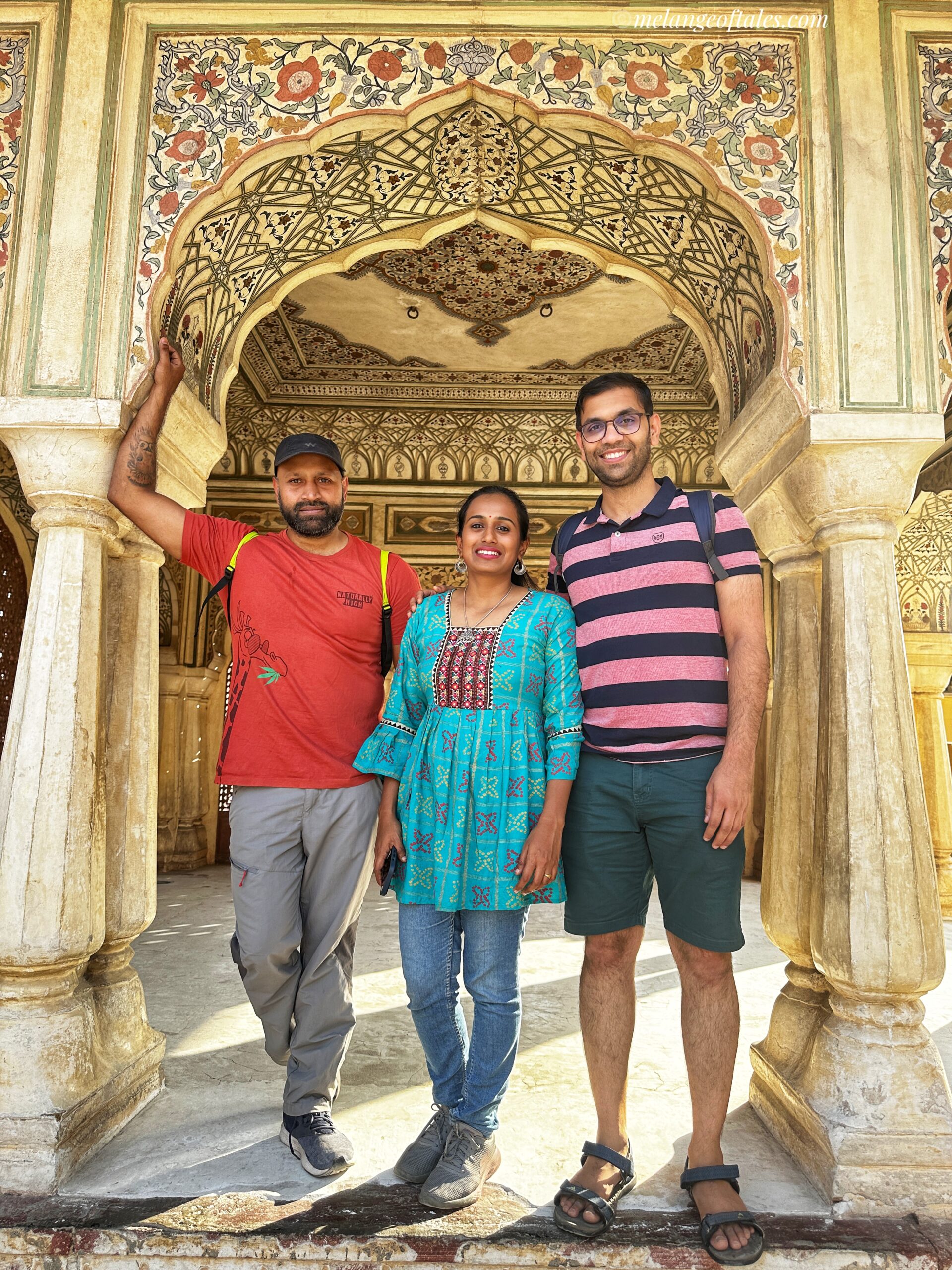
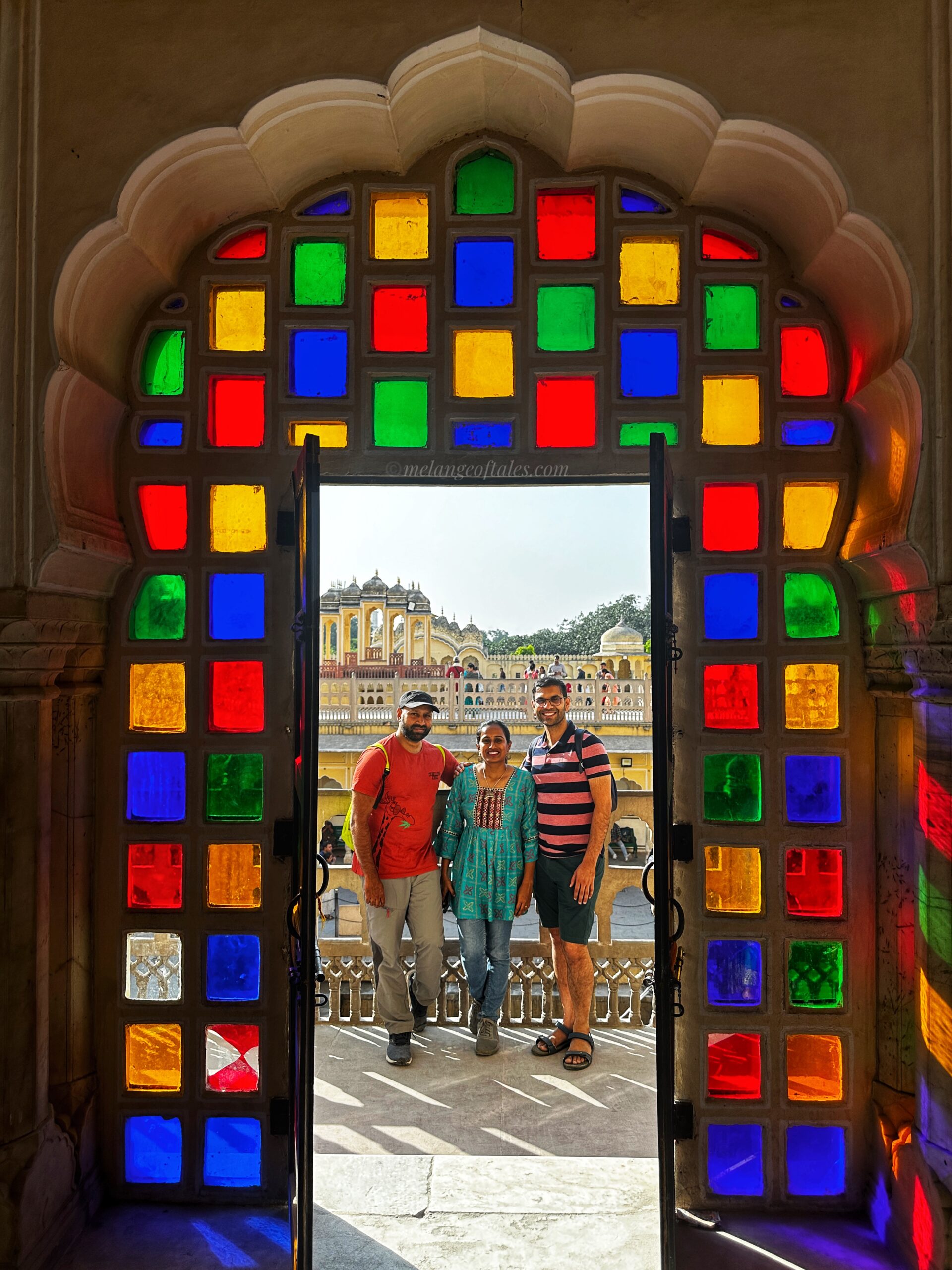


Entry ticket fee: Rs. 50 (Indians) and Rs. 200 (Foreign nationals)
Timings: 9 am – 5 pm
Jantar Mantar
Jantar Mantar is an astronomical observatory built by Maharaja Sawai Jai Singh II in the early 18th century. The Jantar Mantar at Jaipur is the largest out of the 5 other Jantar Mantars present in North India. It houses large stone instruments in different geometric shapes and helps man view celestial bodies through naked eyes. This has always amazed mathematicians, historians, architects and scientists around the world. It is said that the best time to visit this place will be at noon when the sun is right above the place. You should hire a guide to Jantar Mantar if not for any other place.
Entry ticket fee: Rs. 50 (Indians) and Rs. 200 (Foreign nationals)
Timings: 9 AM – 5 PM
City Palace
Maharaja Sawai Jai Singh II moved his capital from Amber to Jaipur in the early 18th century. Since then the city palace of Jaipur serves as the royal residence. The palace was built combining Rajput and Mughal architecture. A part of the palace is open for tourists which also comprises of a museum.
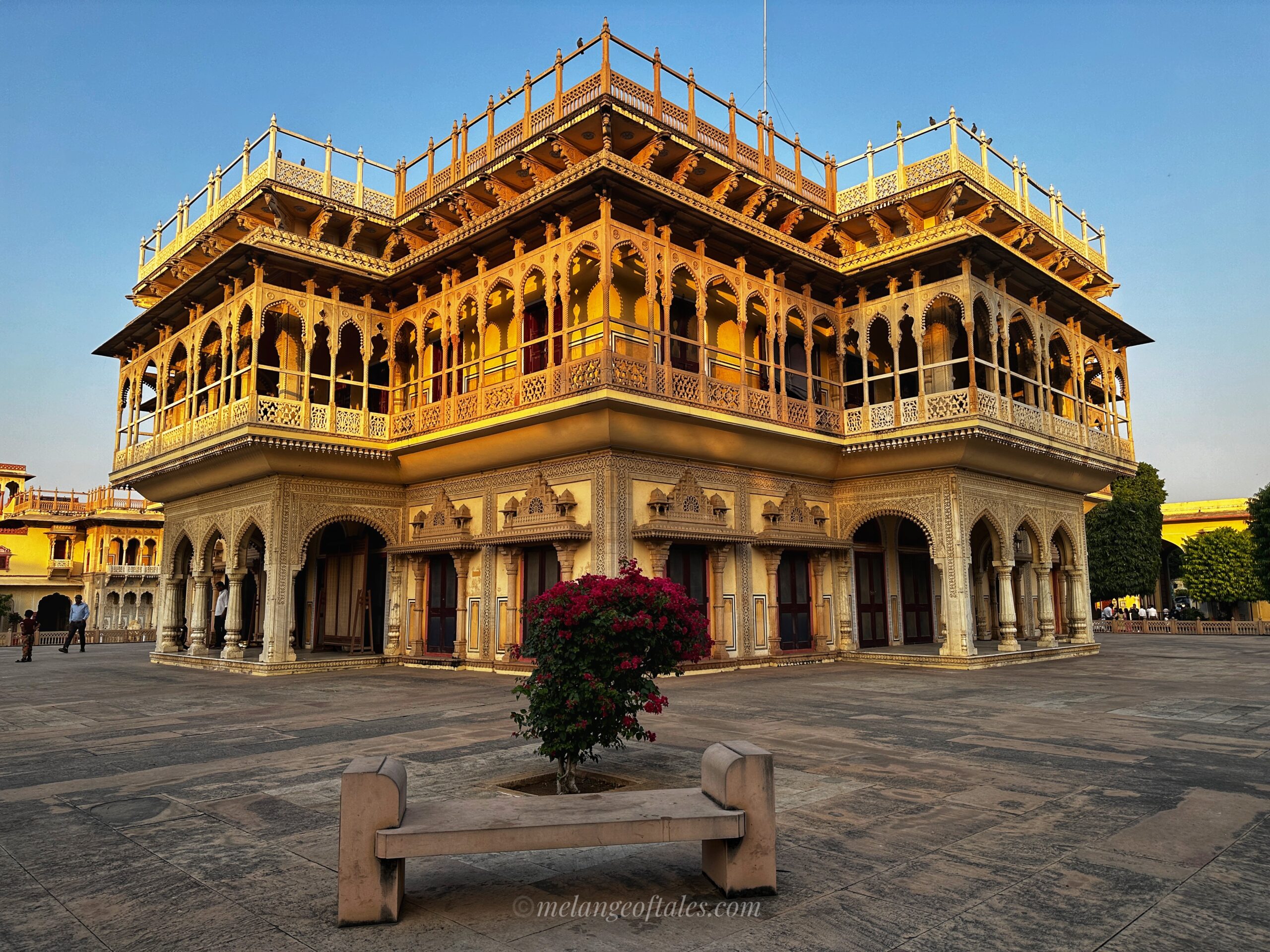
As with all other palaces in Rajasthan, the city palace in Jaipur also showcases its unique collection of royal clothing, weaponry, paintings, embroidery wall hangings, gifts from different countries and much more.
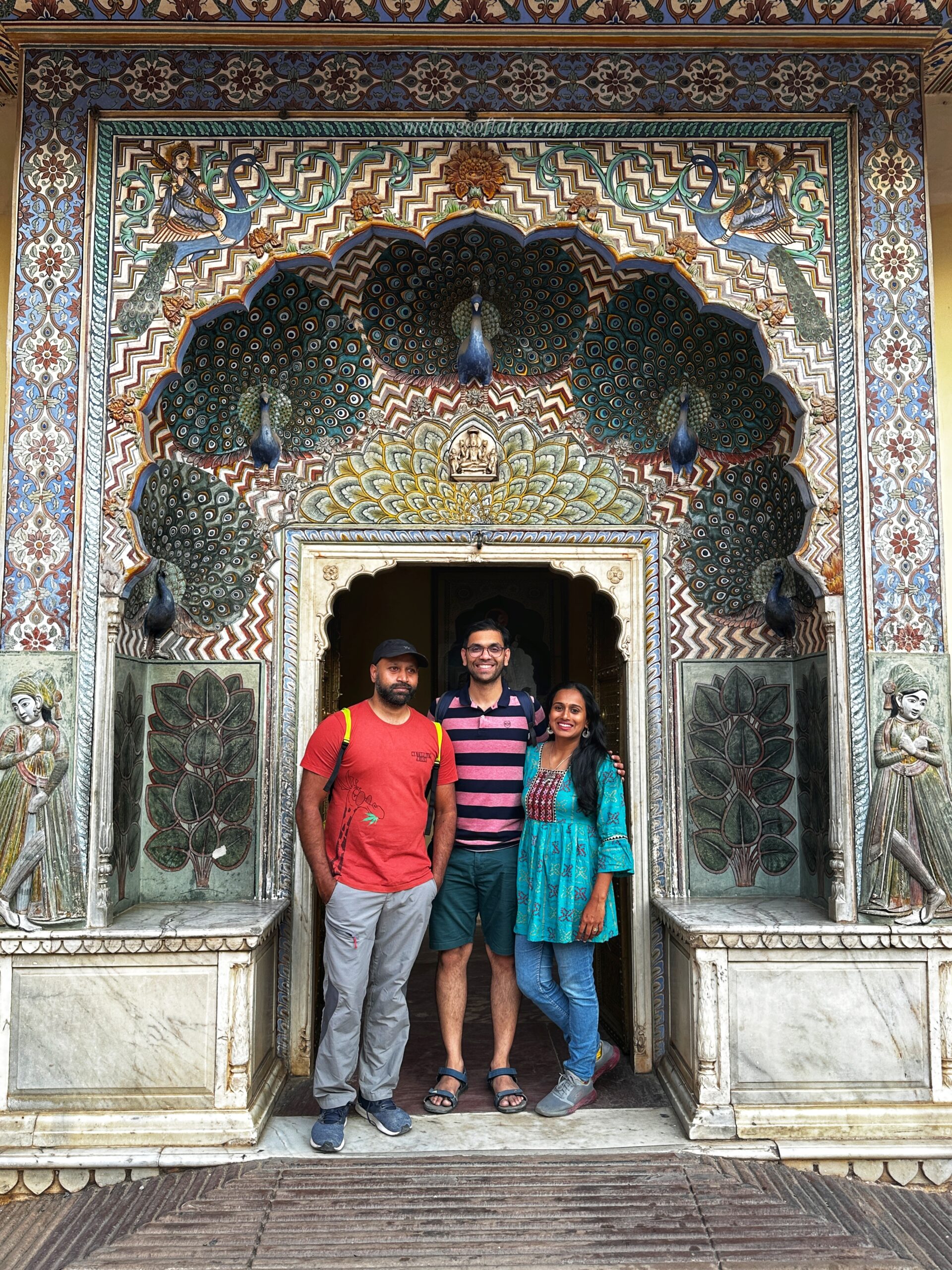



Entry ticket: Rs. 300 (Indians) and Rs. 700 (Foreign nationals)
Timings: 9.30 AM – 5 PM
Exploring the Old Capital
Amer Fort (Amber Palace)
Amer fort was built in the late 16th century AD. It was the old capital of the kings of Jaipur. Amer is surrounded by Aravalli hills. The palace’s border walls are 19 km long and it is the 3rd longest in the world after the Great Wall of China and Kumbalgarh Fort. It is also a UNESCO World Heritage site.
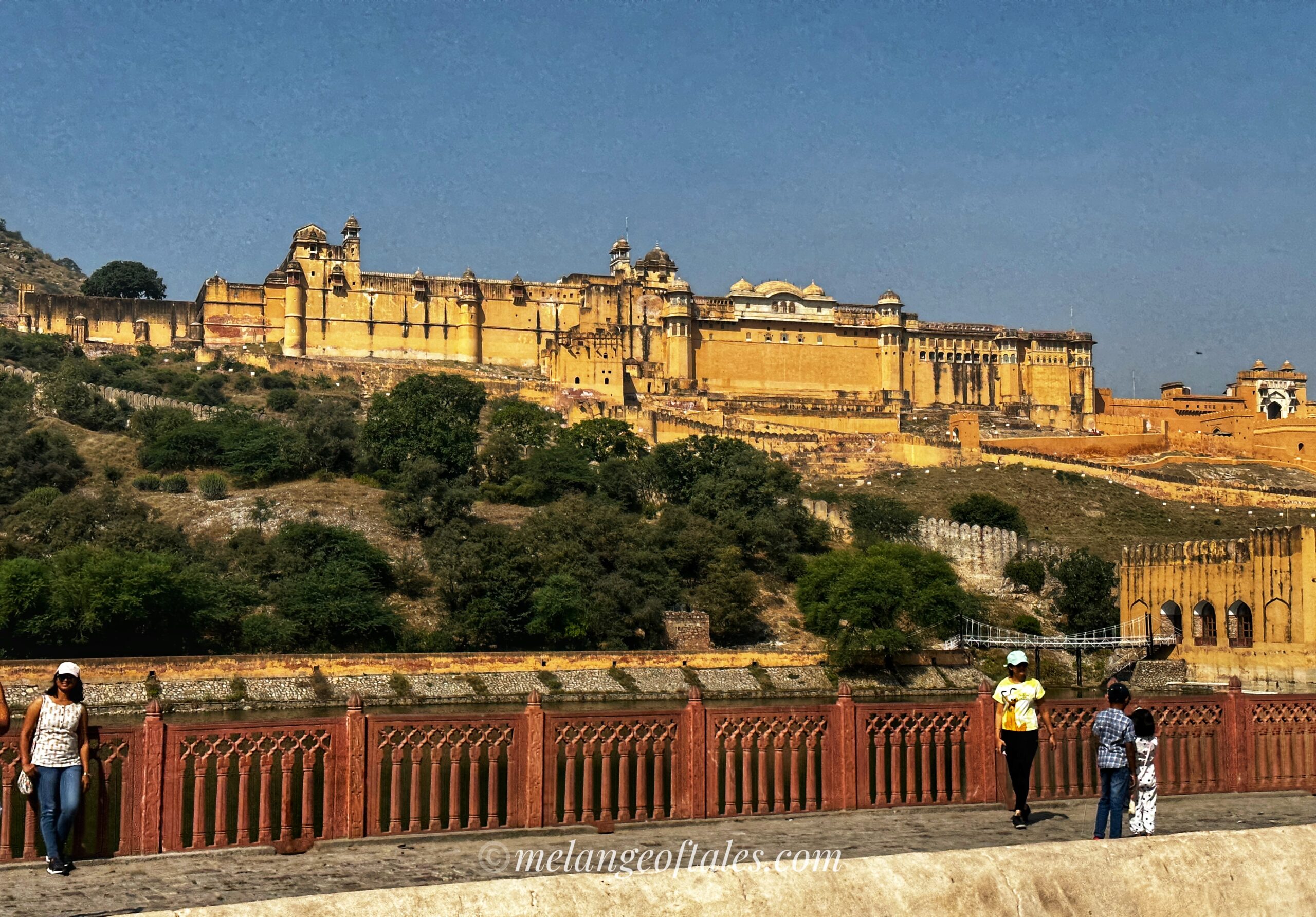
The palace was constructed with red sandstone and marble, based on Rajput architecture. Jaigarh fort is visible from Amer fort and was constructed at 10 km.
There are 6 courtyards in the palace for different purposes and the palace itself is like a maze. Since we hired a guide, he had showed us the secret passageways used to visit the Jaigarh fort, which was very interesting.



Note: We thoroughly enjoyed a 15 min Kathputli (puppet) show for Rs.500 😊
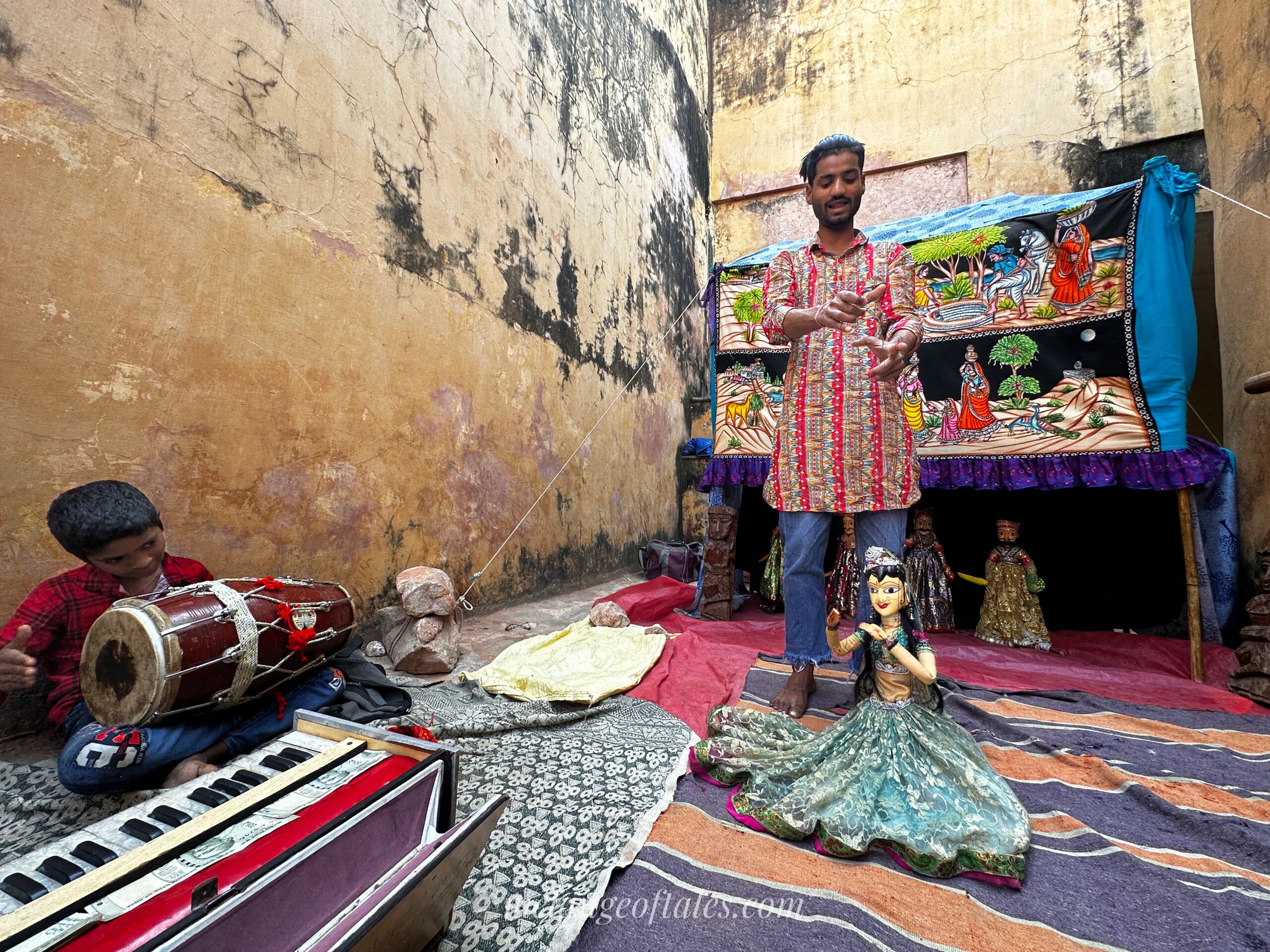
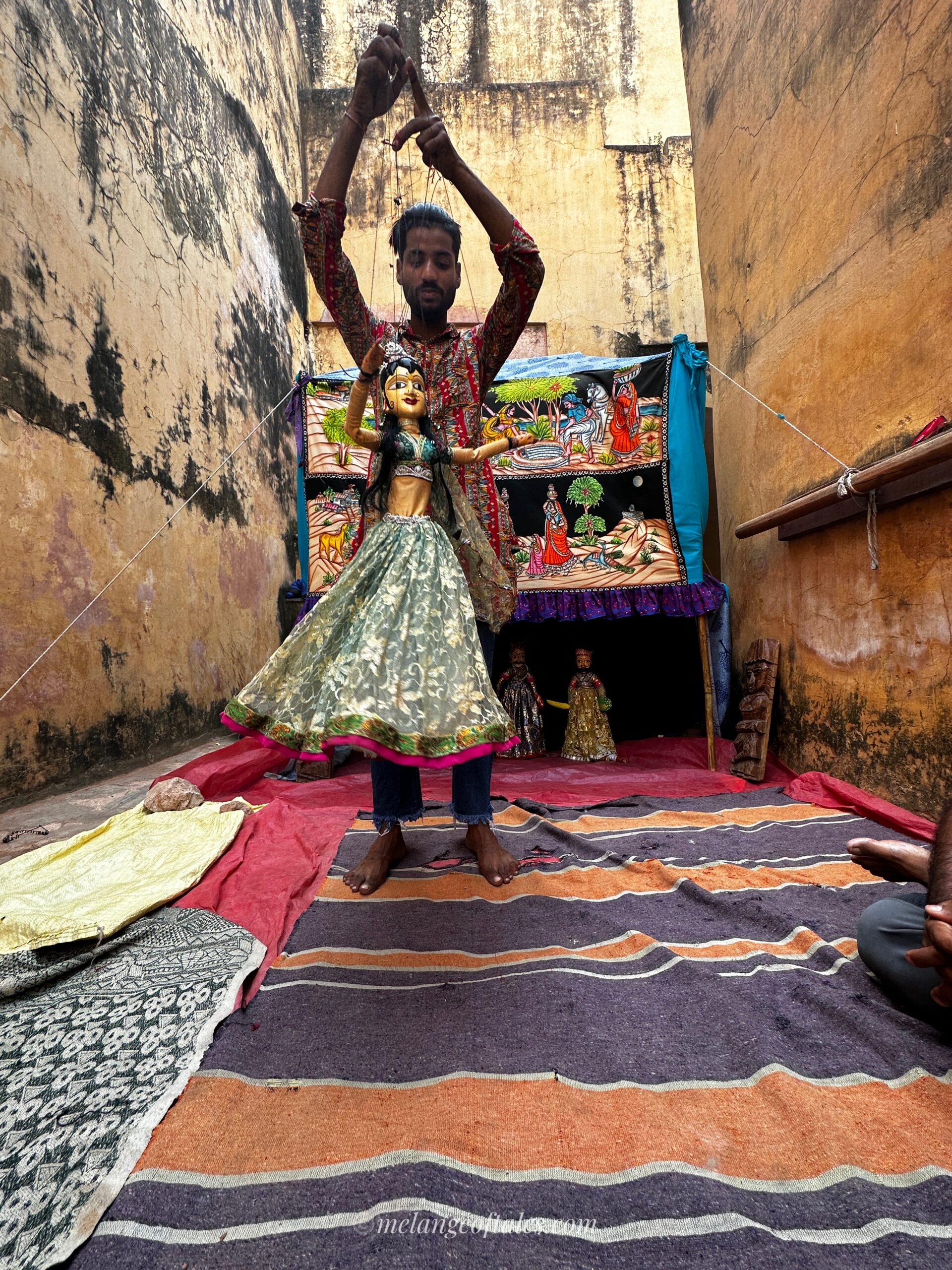
Entry ticket fee: Rs. 100 (Indians) and Rs. 500 (Foreign nationals)
Timings: 9 AM – 5 PM
Jaigarh Fort (Cheel ka Teela)
I found Jaigarh fort built in the early 18th century to be one of the most interesting places to be visited in Jaipur. While Amer fort was the residence of the royal family, Jaigarh fort was for military purposes. The fort is surrounded by thick deciduous forests of the Aravalli. It houses the world’s largest cannon called ‘Jaivana’.

Jaigarh fort was built with red sandstones and to protect the Amer fort. There are windows in the fort which gives you a full view of what’s outside the fort but the vice versa isn’t possible. This was a similar characteristic observed in the Hawa Mahal as well.
There are 3 underground storage tanks below the central courtyard which stores water from the Aravalli ranges. The largest tank is said to store around 2,27,12,470 litres of water. During my visit I also saw water in one of the tanks.
Entry ticket fee: Rs. 150 (Indians) and Rs. 200 (Foreign nationals)
Timings: 9 AM – 5 PM
Nahargarh Fort
Nahargarh fort was built in the early 18th century by Maharaja Sawai Jai Singh as a retreat place for the royal family. We specially visited the fort for its sunset view. The sunset from the edge of the fort overlooking the city was so beautiful.
Entry ticket fee: Rs. 50 (Indians) and Rs. 200 (Foreign nationals)
Timings: 9 AM – 5 PM
Jal Mahal
Jal Mahal is a palace situated in Man Sagar Lake was built in the late 17th century. There had been several attempts of restoration of the palace by the Royals followed by the Government of India. The palace is still not open for tourists due to various reasons.

Other places of interest
Albert Museum
Albert hall museum is the largest museum in Rajasthan and it is known for its collection of artifacts from all over the world. The founding stone for this museum was laid by King Edward VII (Albert Edward) during his visit in the late 19th century. This was also the time many monuments in Jaipur within the Pink City was coloured in pink to show the hospitality.
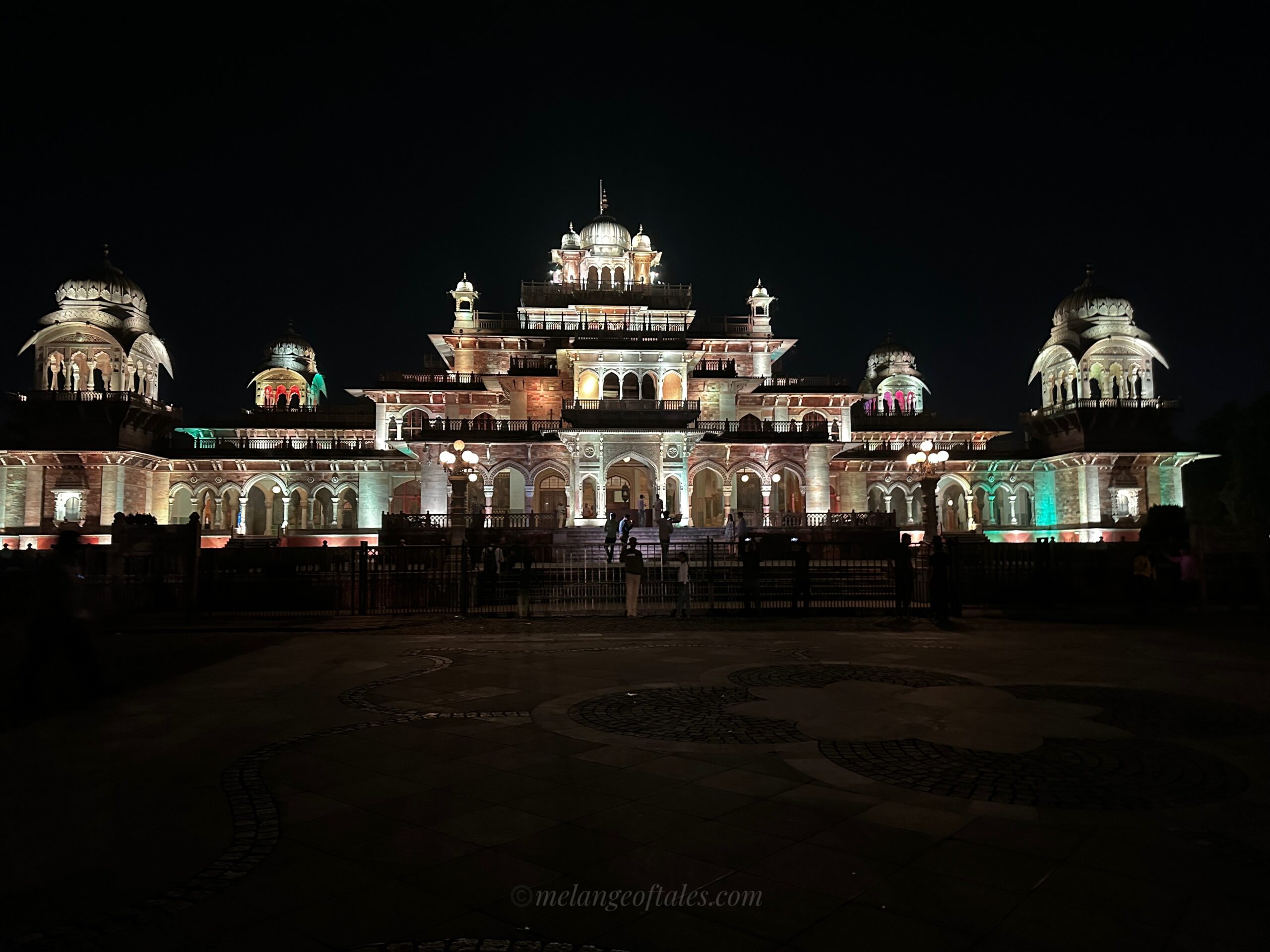
Entry ticket: Rs. 40 (Indians) and Rs. 300 (Foreign nationals)
Timing: 9 AM – 5 PM
Markets
Shopping in Rajasthan is so much fun. The variety of colorful clothes and patterns (especially leheriya) will always leave you wanting for more. In Jaipur, apart from clothes you can shop for shoes, pashmina, gem stones, jewels, carpets, pillow covers, bedsheets, door hangings, handicrafts and ornaments like bangles, earrings and necklaces.
Bazaars: Chandpole, Johari, Tripolia, Bapu, Kishanpole
I felt that shopping at Jaisalmer or Jodhpur was much cheaper when compared to Jaipur. I shopped items at all the cities I visited in Rajasthan. Pashmina shawl was the unique item that I shopped within the City Palace in Jaipur.

Rajasthan, its grandeur, food, clothes and colours left me wanting for more of it 😊

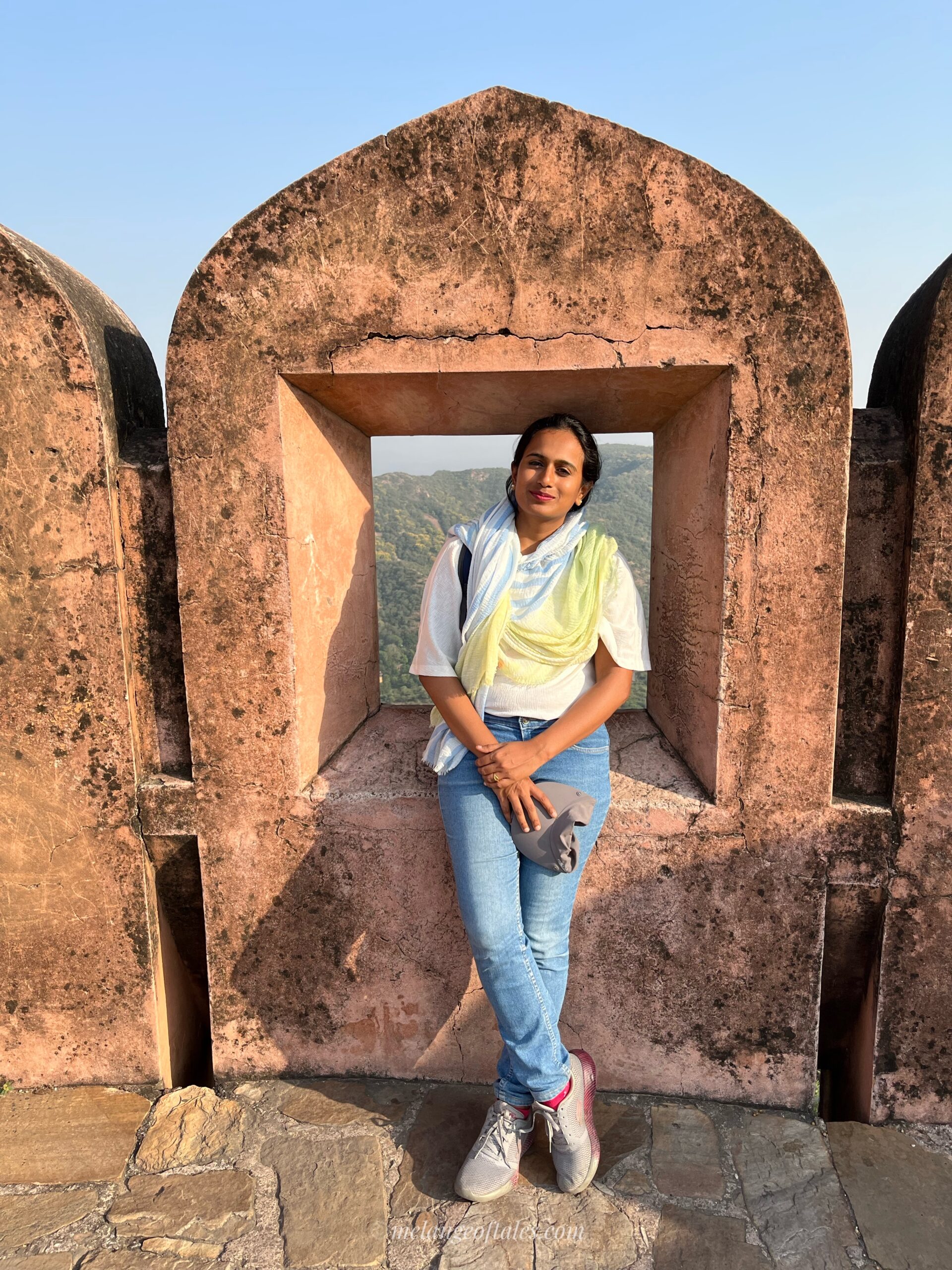
Tips to be a responsible traveller
- Carry your own water bottle, tumblers/mugs when you travel
- Avoid buying bottled water in shops, instead you can fill water from the homestay/hotel where you stay. You will also find fresh water from the mountains/waterfalls which can be used for drinking
- Instead of carrying non-biodegradable wet tissues, carry small towels and hand kerchiefs
- Use menstrual cups in the place of sanitary napkins during your periods. Napkins which are not plant based are non-biodegradable and take at least 500 years to decompose, after releasing toxins into the soil
- Reduce, Re-use and Recycle to protect Mother Earth

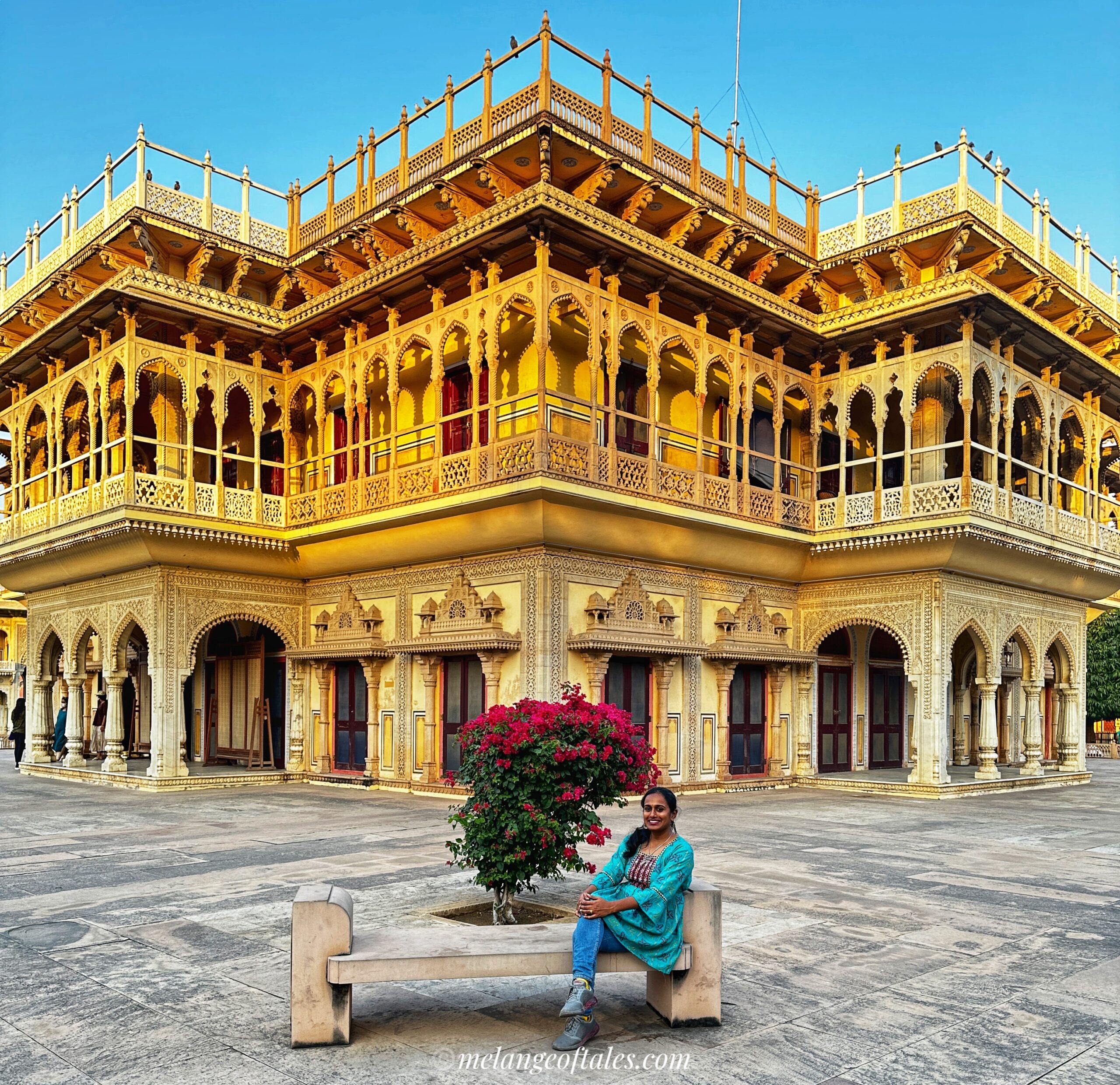













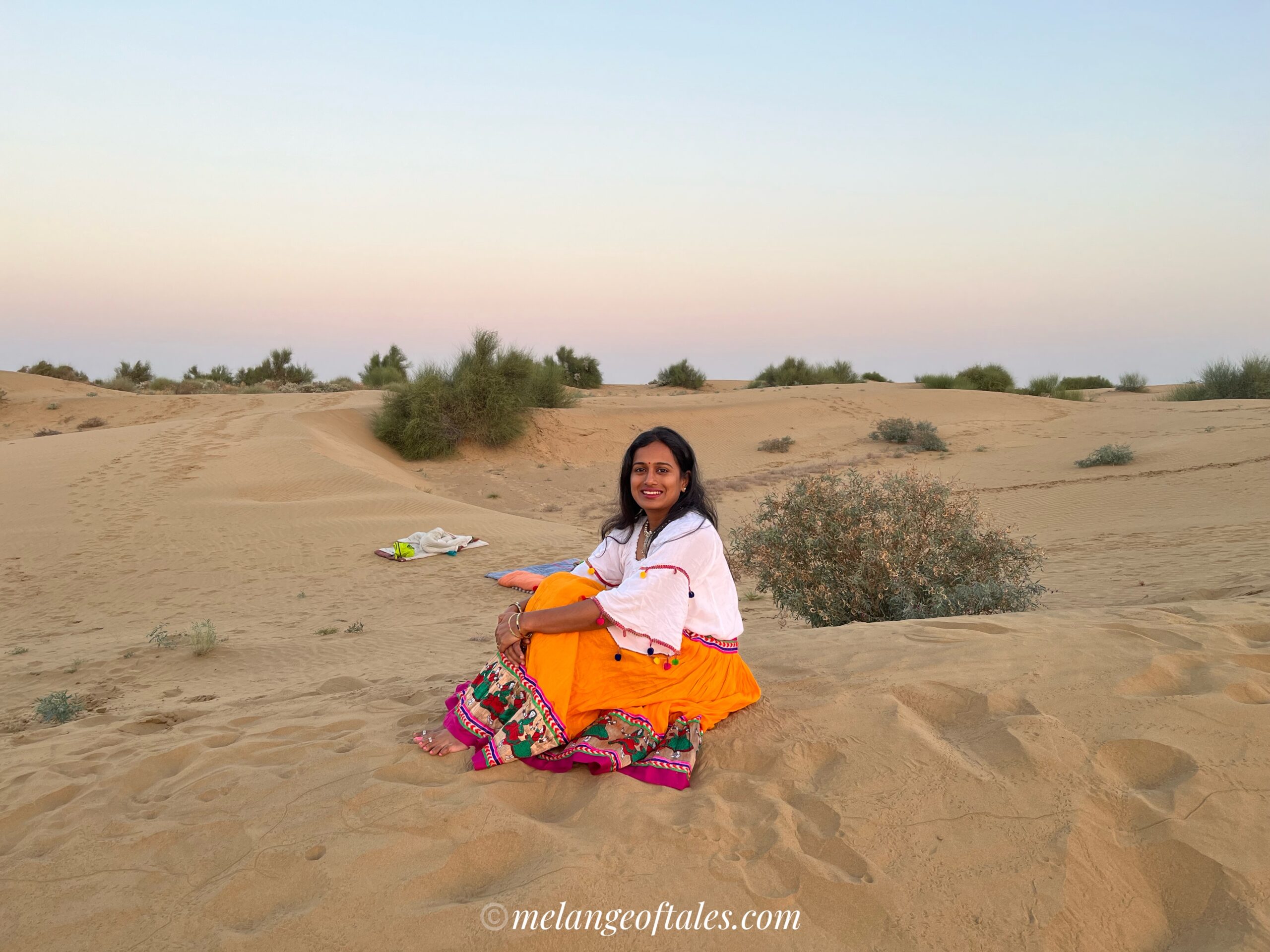
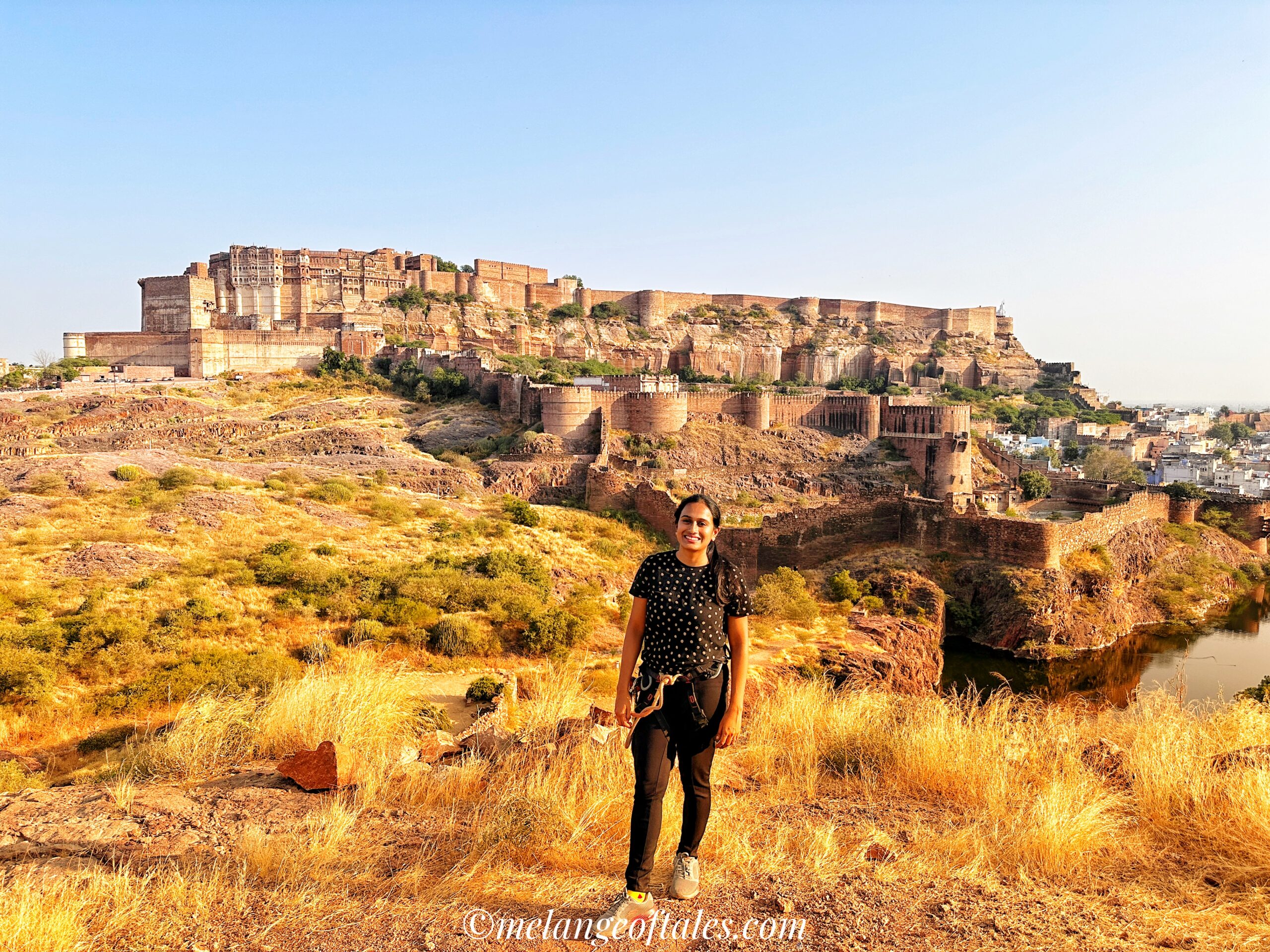
I planned my trip based on your post. Thank you for all the details!